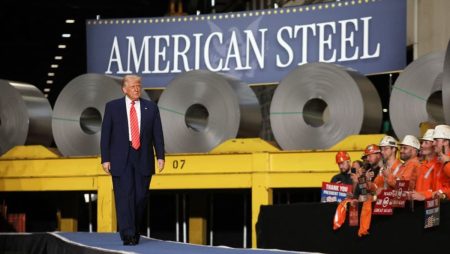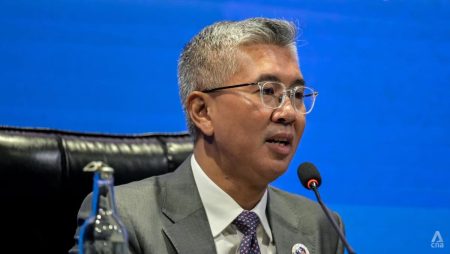The global fashion industry is navigating a complex landscape of shifting trade dynamics, with escalating tariffs threatening to reshape the competitive field. The specter of increased tariffs on Chinese exports, especially in the fashion sector, presents a significant challenge for retailers reliant on China’s manufacturing prowess. Companies like Urban Revivo, a Chinese fast-fashion retailer with ambitious expansion plans in the US, are grappling with the potential financial ramifications of these trade policies. The prospect of a 60% tariff surge, as projected by the Boston Consulting Group (BCG), could add billions of dollars in incremental costs to the fashion industry by 2033, placing substantial pressure on profit margins and potentially impacting consumer prices. This looming tariff war between the US and China has the potential to dramatically alter the trajectory of global trade, forcing businesses to re-evaluate their sourcing strategies and pricing models.
The impact of these tariffs is not evenly distributed across all industries. BCG’s analysis highlights that fashion-related items, along with consumer electronics and electrical machinery, are among the most vulnerable categories of Chinese exports. These three sectors combined are projected to absorb over US$99 billion in additional tariffs, a staggering sum that could trigger a ripple effect throughout the global supply chain. While Chinese companies have historically demonstrated a degree of resilience in managing US tariff costs, the sheer magnitude of the potential increases poses an unprecedented challenge. The anticipated erosion of profit margins, estimated to be as high as 14 percentage points, could severely restrict companies’ ability to absorb these extra costs, leading to increased prices for consumers.
Urban Revivo’s response to the looming tariff increases exemplifies the dilemma facing many retailers. The company’s founder, Li, suggests that absorbing increased tariff costs is unlikely, and price hikes are inevitable. This strategy, while seemingly straightforward, carries significant risk. Passing on increased costs to consumers could negatively impact sales, particularly in a competitive market like the US. Urban Revivo, preparing to launch its first US store in New York, faces the daunting task of building brand recognition and market share against established giants like Zara, H&M, and Ralph Lauren. Successfully navigating this competitive landscape while simultaneously managing increased costs presents a significant hurdle for the company.
The challenge for Urban Revivo and similar retailers lies in balancing the need to maintain profitability in the face of rising costs with the imperative to remain competitive on price. Consumers are price-sensitive, and a significant price increase could drive them towards more affordable alternatives. This is particularly true in the fast-fashion segment, where consumers are accustomed to low prices and frequent turnover of styles. Moreover, Urban Revivo’s strategy hinges on the assumption that competitors will follow suit and raise their prices as well. If competitors choose to absorb the increased costs, even temporarily, Urban Revivo could find itself at a significant disadvantage.
Urban Revivo’s US market entry strategy highlights a broader trend among Chinese retailers targeting the American market. Many of these retailers initially focus on areas with large Chinese communities, particularly on the East and West Coasts. This approach provides a familiar customer base and reduces the initial marketing and branding challenges associated with entering a new market. However, it also limits the potential for broader market penetration and mainstream success. To truly compete with established global brands, Chinese retailers need to move beyond these niche markets and cultivate appeal among a wider American consumer base. This requires a deep understanding of American consumer preferences, sophisticated marketing campaigns, and a compelling brand narrative.
The potential for Chinese retailers to win over American consumers en masse remains an open question. While some brands have achieved a degree of success in niche markets, achieving widespread acceptance and market share comparable to established global brands requires a sustained and strategic effort. The current trade environment, characterized by uncertainty and the threat of escalating tariffs, further complicates this challenge. Chinese retailers must navigate not only the competitive landscape but also the volatile political and economic factors that influence consumer behavior and market dynamics. Success in the US market requires a long-term vision, a willingness to adapt to changing circumstances, and a deep commitment to understanding and meeting the needs of the American consumer.










